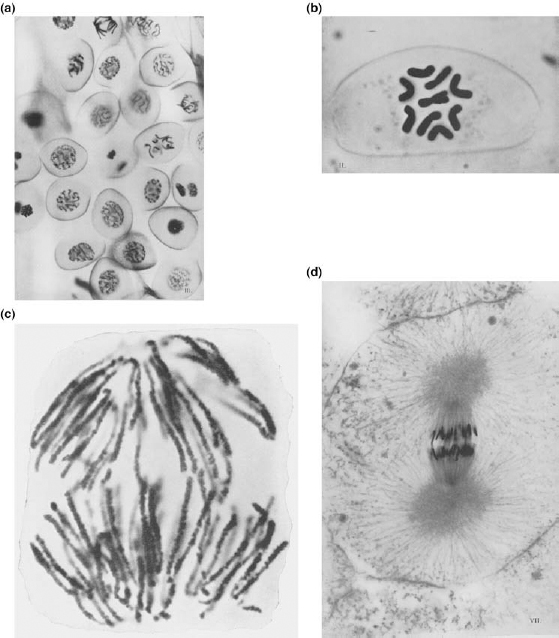
Through the first half of the twentieth century, Charles Darlington performed brilliant studies of the chromosomes. (a) First P.G. mitosis in Paris quadrifolia, Liliaceae, showing all stages from prophase to telophase. n = 10. × 800 magnification. (b) First P.G. mitosis in polar view. Tradescantia virginiana, Commelinaceae, n = 9 (from aberrrant plant with 22 chromosomes). × 1200. (c) Root tip squashes showing anaphase separation in Fritillaria pudica, 3x = 39. Note the spiral structure of chromatids (daughter chromosomes). × 3000. (d) Cleavage mitosis in the morula of the teleostean fish, Coregonus clupeoides, in the middle of anaphase. Spindle structure revealed by slow fixation. × 4000.
16
![]()
The Eukaryotic Chromosome
Science is about building causal relations between natural phenomena (for instance, between a mutation in a gene and a disease). The development of instruments to increase our capacity to observe natural phenomena has, therefore, played a crucial role in the development of science—the microscope being the paradigmatic example in biology. With the human genome, the natural world takes an unprecedented turn: it is better described as a sequence of symbols. Besides high-throughput machines such as sequencers and DNA chip readers, the computer and the associated software ...
Get Bioinformatics and Functional Genomics, Second Edition now with the O’Reilly learning platform.
O’Reilly members experience books, live events, courses curated by job role, and more from O’Reilly and nearly 200 top publishers.

